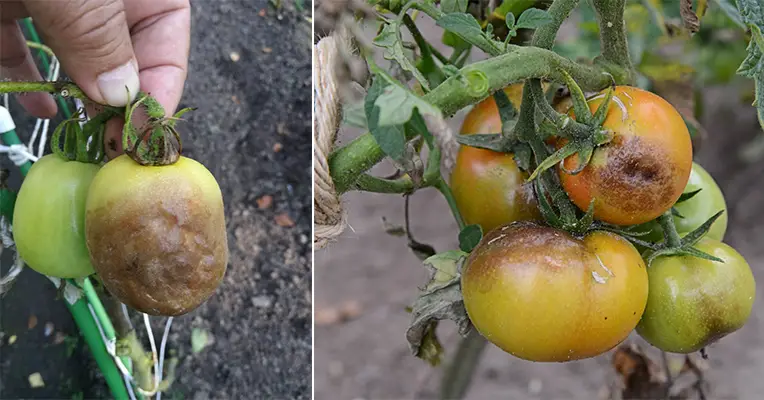Tomatoes are prone to various issues that can lead to rot, including fungal infections and environmental factors. Understanding these causes and knowing how to address them can help you maintain a healthy tomato crop. Here’s a guide to the common reasons for tomato rot and how to manage them effectively.
Common Causes of Tomato Rot
- Soil Salinity:
- Cause: Excessive use of fertilizers can lead to high soil salinity, which affects tomato plants’ ability to take up water and nutrients.
- Solution: Reduce or stop fertilizer application immediately if you suspect high soil salinity. Consider performing a soil test to guide appropriate adjustments.
- Calcium Deficiency:
- Cause: Lack of calcium in the soil often results in blossom end rot, where the bottom of the fruit develops black, sunken spots.
- Solution: Spray your plants with a solution of potassium nitrate or use a calcium-rich foliar spray to correct the deficiency. Additionally, ensure proper soil pH levels to improve calcium availability.
- Dry Soil:
- Cause: Insufficient watering can cause tomato roots to climb to the surface, and the plants may exhibit signs of stress, such as wilting and poor fruit development.
- Solution: Water your tomato plants regularly and deeply to maintain consistent soil moisture. Use mulch to help retain soil moisture and reduce evaporation.
- Phytophthora (Late Blight):
- Cause: Phytophthora, or late blight, thrives in conditions of high humidity and fluctuating temperatures. Dense planting can exacerbate the spread of this disease.
- Solution: Prevent late blight by ensuring adequate spacing between plants to improve air circulation. Spray your tomato bushes with a Bordeaux mixture solution to combat phytophthora. This fungicide helps control black spots and prevents further spread of the disease.
Preventive Measures
- Regular Monitoring: Inspect your tomato plants frequently for early signs of disease and address any issues promptly.
- Good Garden Practices: Rotate crops, avoid overhead watering, and remove infected plants to reduce the risk of disease.
- Use Resistant Varieties: Plant tomato varieties that are resistant to common diseases like late blight for added protection.
By addressing these common causes of tomato rot and implementing preventive measures, you can help ensure your tomatoes remain healthy and productive throughout the growing season.
Show Comments



